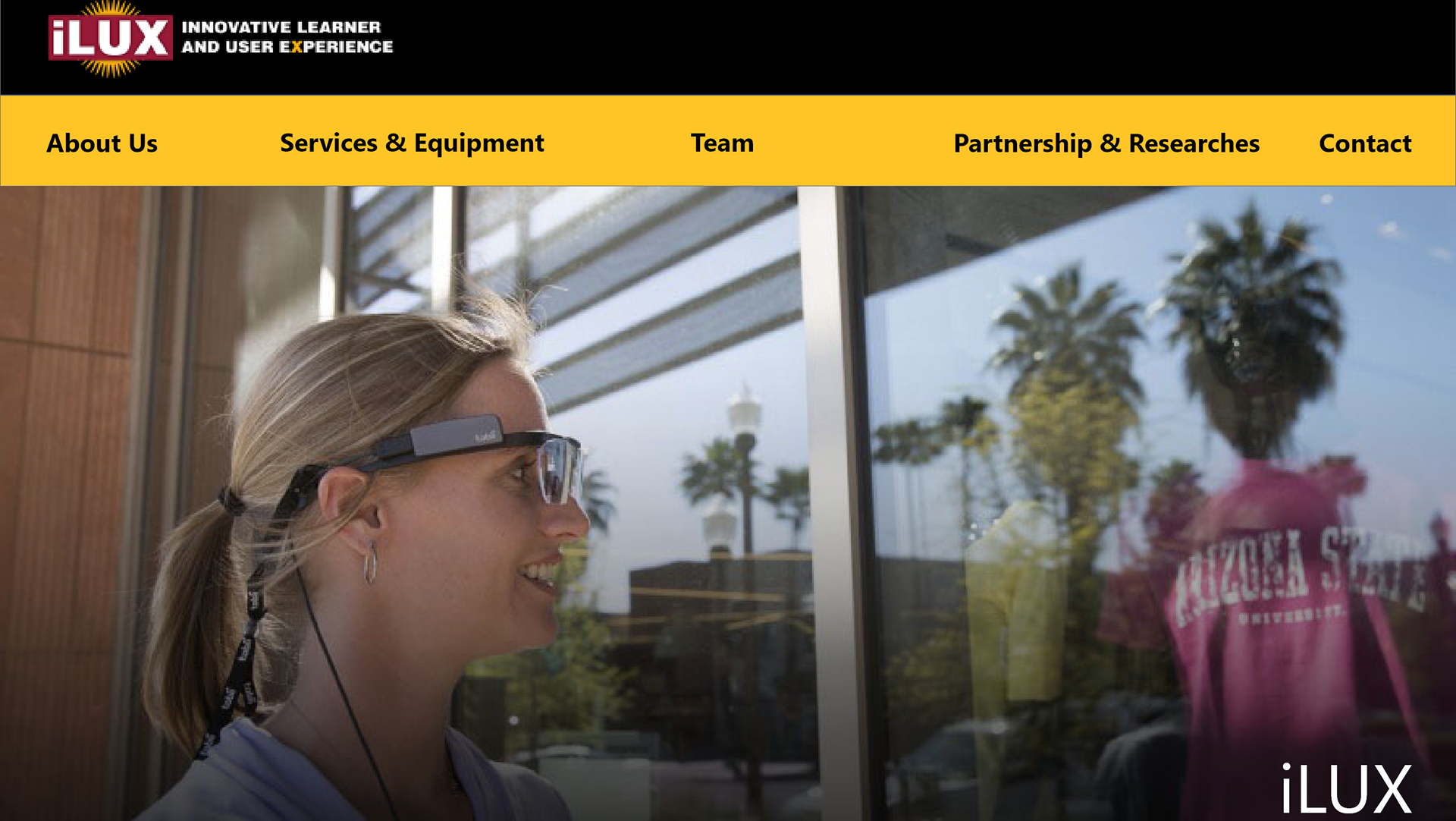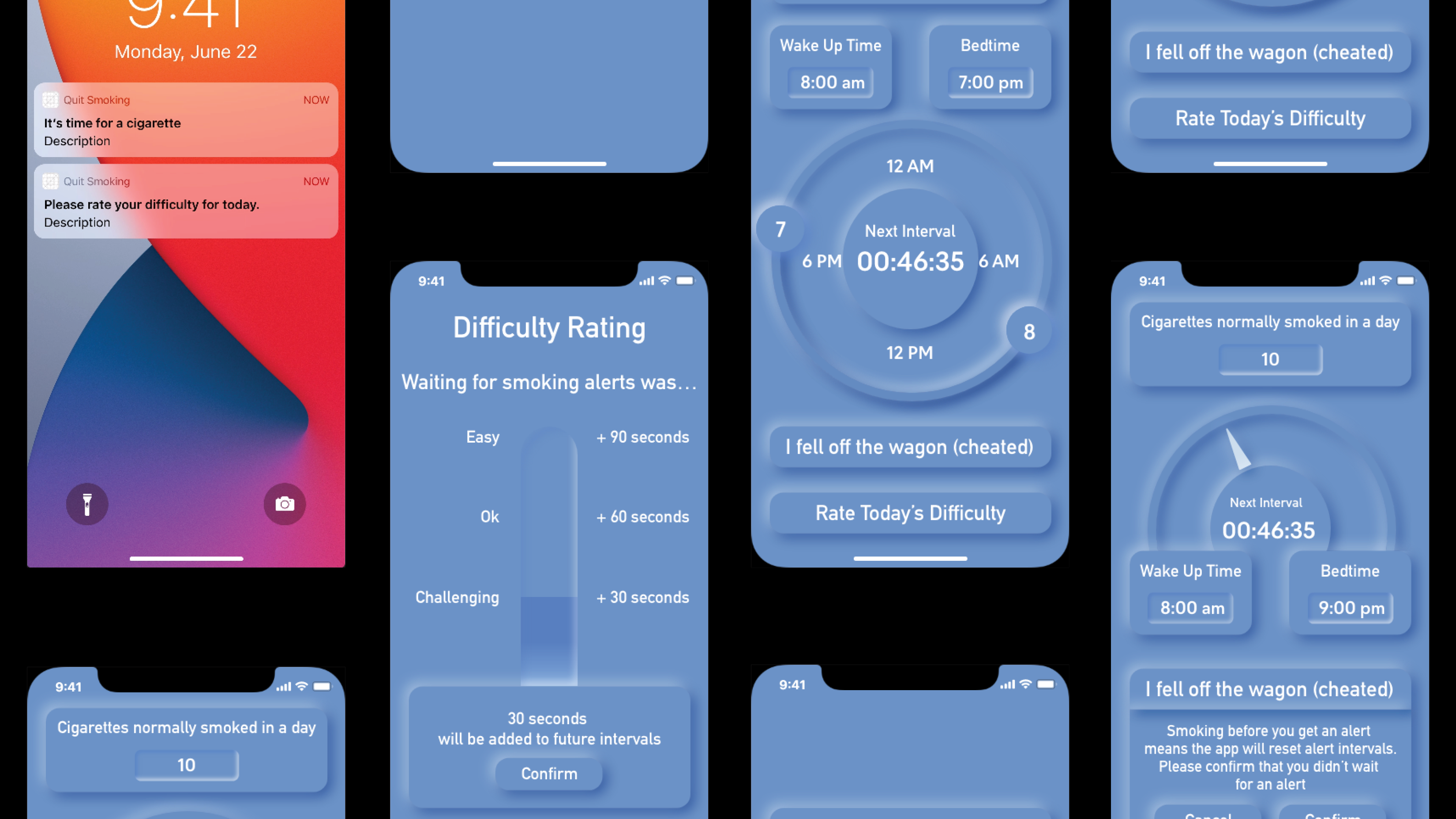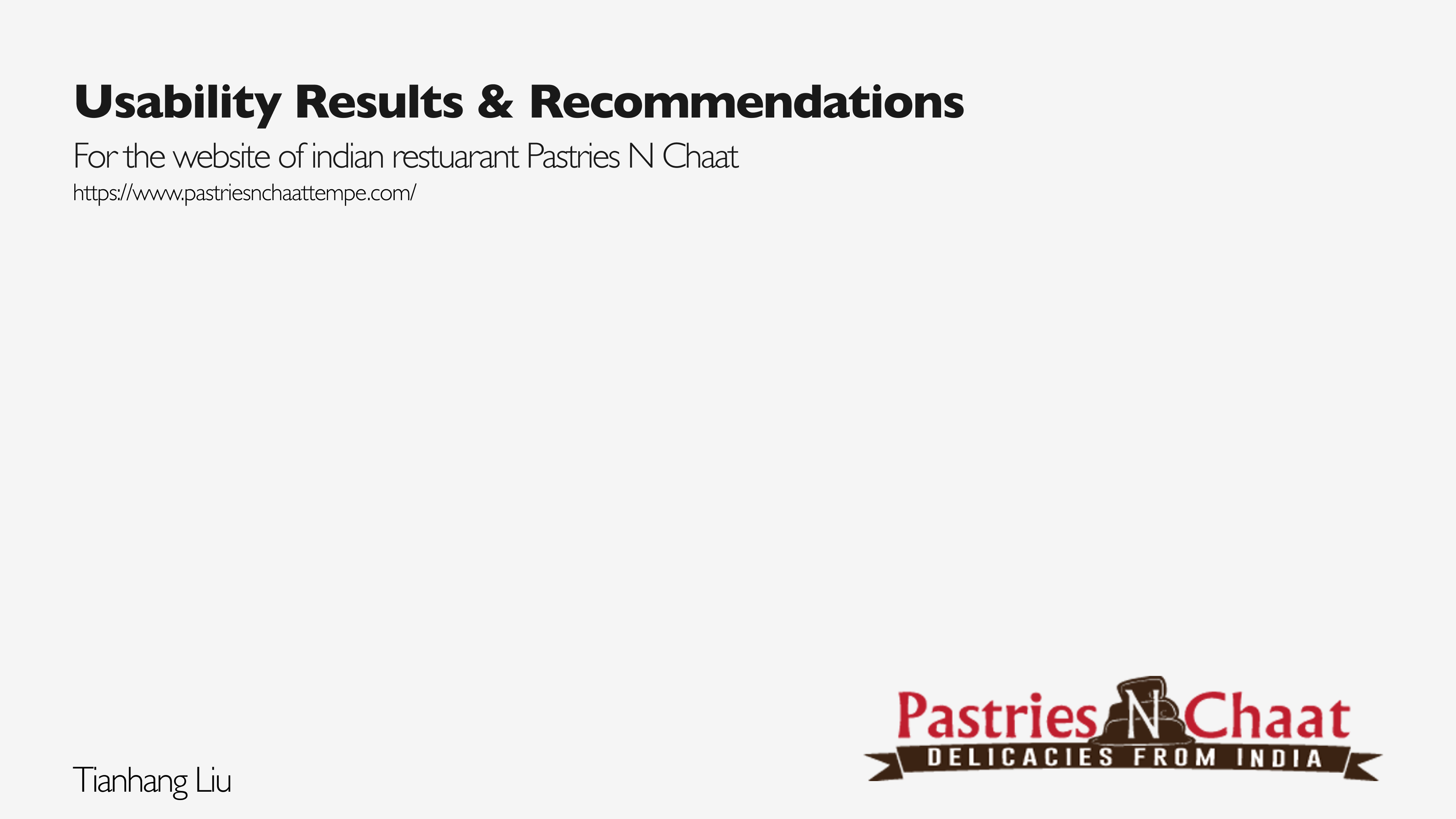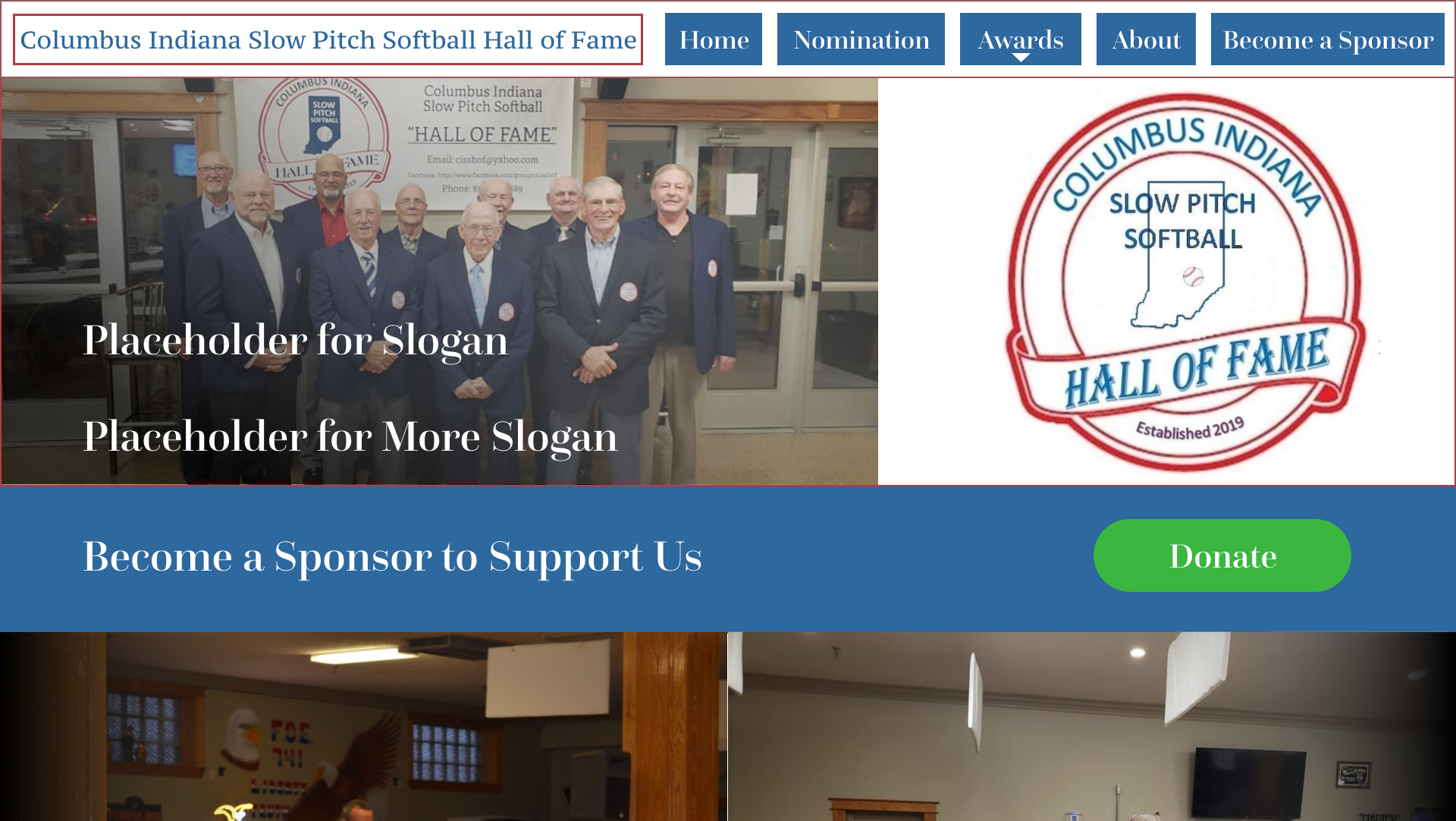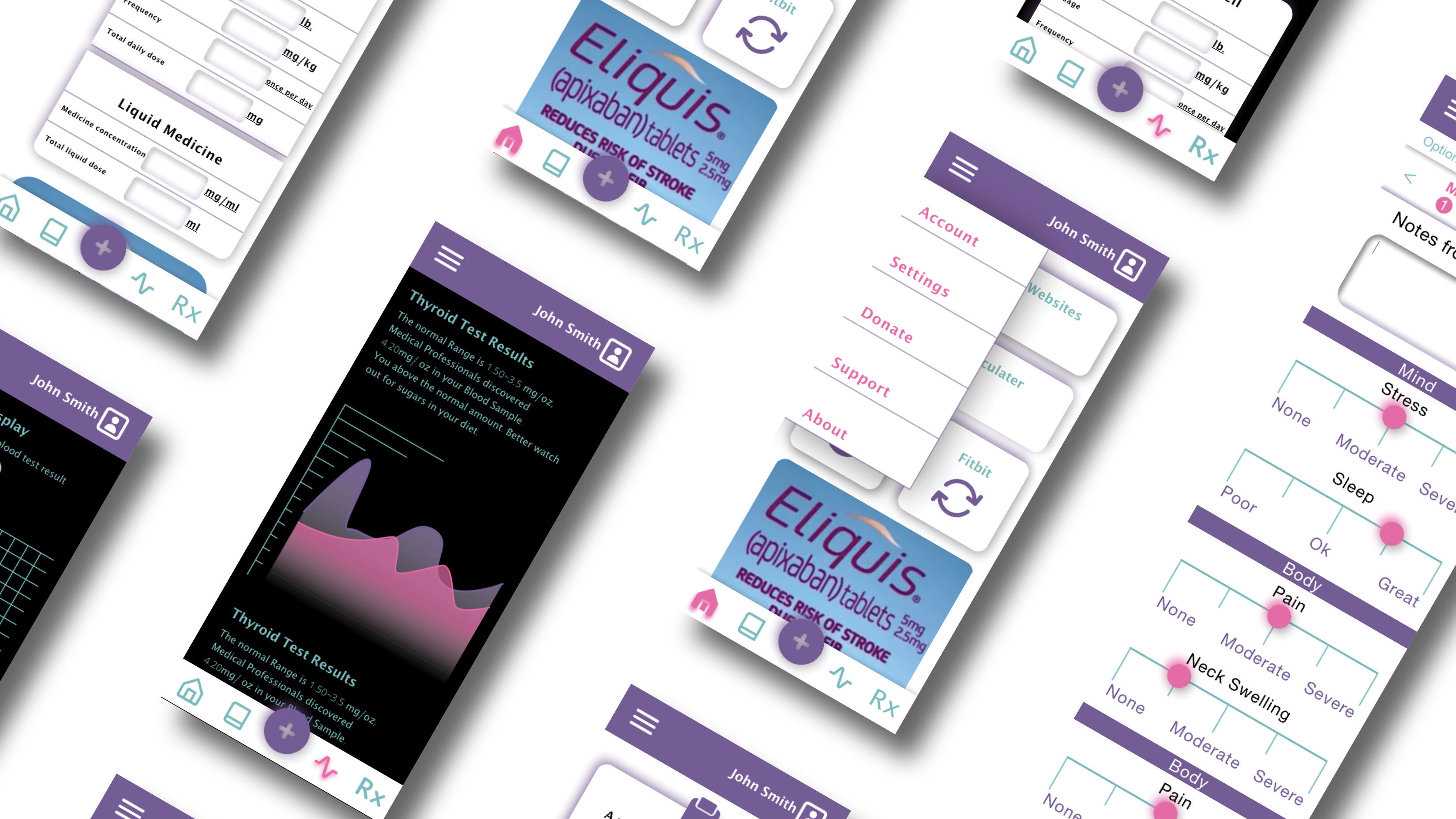Adidas has been in the business for nearly a century(“History”) and given the development that the business has had. It’s no surprise that Adidas is a well-known name across the globe. Being one of the leaders within the industry comes with its own challenge. The competition is great, and the expectation is great.
To confidently determine a strategy to improve Adidas’s online business. I conducted the SWOT and Competitor analysis:
SWOT analysis is a methodology developed to help understand a business’s Strengths, Weaknesses, Opportunities, and Threats(Berry et al., 2020). It’s a great tool to use to better determine a business strategy to move forward.
After completing the SWOT analysis for Adidas, I learned that Adidas ranks #2 in the sporting industry(Kell, 2021). Adidas has a great brand value and innovative technology that allows it to hold the leading position in the global market. Adidas is also well-positioned in the athleisure space. Despite that, Adidas also has tough competition from other players in the field. Adidas isn’t as strong in the sport-focused product line and high-end premium product line(Paul, 2021). On the business side, Adidas only owns one other brand: Reebok, this situation may put Adidas in a disadvantaged position. Adidas’s profit efficiency isn’t as strong as some of its competitors(Glebova, 2022). These weaknesses can be equally considered opportunities and/or threats. Adidas could increase its budget more on marketing and building a stronger brand identity. Adidas’s partnership with Parley Ocean Plastic is great but the effort to bring it to people’s attention is lacking. Not many people are aware of Adidas’s efforts in sustainability. E-commerce marketing is only growing with no sign of regression. Adidas should push further with its e-commerce business and focus on growing DTC which would have more control over product presentation. Selling products through third-party platforms like Amazon may not give them as much freedom as they need to properly brand their products. The fitness technology industry is also growing and presents a unique opportunity for Adidas. Adidas should venture into the space before other players take up all the market shares.
For the competitor analysis, I picked Nike and New Balance as the competitors for Adidas. They are all in the sporting goods and apparel industry. Nike and Adidas are well-known rivalries. They share lots of similarities when it comes to their product line. In this fight, Nike is the winner in most metrics. This dynamic presents many opportunities and threats that Adidas could work on. New Balance has a strong brand value as Adidas does, and it also focuses heavily on the athleisure space. New Balance is rated #3 as America’s most wanted shoe (Paul, 2021), close to Adidas which is rated #2. Although New Balance’s portfolio isn’t nearly as diversified as Adidas or Nike’s. Since Adidas is currently positioned very well in the mid-tier and high-tier for its sporting goods. I thoughts it’s important to look at the other players that are positioned similarly. All 3 brands target a very similar demographic: active, athletic, and young folks. But Nike and Adidas have a wider reach to other demographic as well.
Usability analysis
When looking at each of the 3 companies’ websites. I found that all of their web pages have the necessary features for an e-commerce website. Overall they all have decent usability on their websites. I will break down the details of the Usability analysis below into 4 sections:
1, Easy to use.
All 3 sites have the basic component of an e-commerce webpage. There’s a search bar, shopping cart, and account sign-in at the top right. In the center of the header, the major categories of their product line are listed. All 3 sites share the same items: New, Men, Women, Kids, and Sale. The shipping information and return policy are all easily located under the footer sections. Yet Adidas.com also presents such information on the top right for even easier access. When typed in “Return” on their websites, all 3 sites showed the return page for detailed instructions. It took me roughly the same amount of time to look for contact information on all 3 pages. Although the number was slightly hidden away with New Balance. It’s only located on the return page. I assume that New Balance has fewer employees working in customer care. They want to use it for the more important and more difficult user tasks. The return process for Adidas was slightly more difficult. It is combined with the order tracker page and not very clearly indicated that you can return from this page as well. Whereas the actually return page contains a series of instructions on how to use the order tracker to return. It’s a fairly high-friction process.
2, Easy to understand.
All 3 sites are easy to understand, they adopted the common e-commerce website structure that everyone is familiar with. It’s easy to look through the list of categories and find what you need. Although like I mentioned earlier on the return page on Adidas.com. It’s fairly confusing to figure out how to return a product. It adds an additional step for the user to go manually from one page to another when the return portal could be presented at the first sight(figure 1.). Nike(figure 2.) and New Balance(figure 3.) have a more straightforward process for this task.
Figure 1.
Figure 2.
Figure 3.
3, Easy to navigate.
All 3 sites shared similar category listings. It’s fairly easy to navigate. But when the product categories grow to as many as Nike and Adidas have. It becomes more challenging to scan through the entire list of products to find the specific thing the users may be looking for. But the search bar can easily solve that problem. The ordering of the categories doesn’t always make sense. Nike lists All shoes and All clothing as the third to last on the entire list(figure 4.).
Figure 4.
4, Aesthetically pleasing.
All 3 websites are professionally designed. They are pleasing to look at. The branded User Interfaces are consistently applied across the websites. It’s easy to understand the functionalities of each interactive component. Clear branding can be seen on Adidas and Nike’s web pages. New Balance on the other hand uses a standard template that is widely used by other e-commerce websites as well. Adidas and Nike also use their own unique typeface, though the font size across Adidas’s website is fairly small. Makes it harder to read for the older demographic. The aesthetic can be a subjective thing, But I can say that they all have quality product imagery and marketing photos.
Target Audience
Persona
For Adidas, there’s a broad set of people that this sporting company is trying to target. Based on the research I have done. I can narrow it down to a defined range within 5 categories: Gender, Age, Interests, Location, and Income levels.
Gender: Adidas manufactures products for men and women. And with the increasing awareness of gender inclusivity, Adidas also began to release more products as gender-neutral(Thomasson, 2019). For a long time, Adidas’s marketing team focused more on the men's side of this global market. But recently Adidas has shifted its focus more toward women(Schlossberg, 2016). As pointed out by Schlossberg, the newer marketing campaigns are geared to appeal to women by including more female athletes and celebrities. Adidas also designs more products for women as well. However, despite the increased effort, Adidas still remains to be favored by male consumers twice the population(Kunst, 2019). Given that men tend to purchase to satisfy their immediate needs versus women's purchase goals for long-term and future needs. It’s possible to assume that Adidas’s competitive pricing makes it an easier choice for instant gratification.
Age: Adidas targets the early 20s to late 20s in its marketing campaigns(Bhasin et al., 2017). But Adidas also is trying to target the younger generation from 14-19, as they believe that they are the most influential consumer group in the world(Bhasin et al., 2017). This is also reflected in SimilarWeb's analysis of Adidas.com(similarweb). 31.36% of Adidas’s consumers are aged from 25 to 34. Followed by 24.08% of consumers aged from 15 to 24.
Marital status: Given the age demographic of most of Adidas’s consumers. It’s easy to assume that most of Adidas’s consumers are single. But married consumers actually take up the majority of purchasing power at around 57%(Allon Statistics, 2022).
Income levels: Given the higher price and quality of Adidas’s products, it’s easy to see that Adidas targets upper-middle & middle-class consumers(Ken, 2020).
Education: Adidas consumers are so vast, that it’s challenging to assume what education level the consumers are. But given the income level of Adidas’s target market. We can assume that Adidas’s consumers tend to have a higher education level.
Location: Adidas is a global brand as it is. Its consumers are also international as well. Consumers are evenly spread across North America, Europe, and Asia-pacific regions(Tighe, 2022).
Occupation: Same with the education level, it’s hard to pinpoint what occupations Adidas’s consumers have, given the vast population of Adidas consumers.
Interests: Consumers purchasing at Adidas are first and foremost interested in sports. In addition, Adidas’s consumers are also interested in fashion and apparel, and computer technology according to the analysis by SimilarWeb.
Goals: Adidas’s consumers are passionate about fitness and sports. And with the growing development of social media. Many people also make their apparel purchase as a form of fashion and political statements. Consumers nowadays care more about the companies represented in the social-political space. Adidas’s consumers are looking for quality sporting apparel that can act as fashion statements as well. Adidas has also been doing more in creating sustainable products. Consumers that buy Adidas products also want to make a better impact on the world with their purchases.
Purchase barriers: The higher price of Adidas products can prohibit people from a lower economic background from purchasing. In addition, as a global manufacturer, Adidas faces criticism for exploiting human rights and underprivileged communities to cut costs of production. Consumers that care about human rights issues are likely not to purchase from Adidas because of that.
How their purchases on your site fulfill their needs: For consumers that hope to fulfill their immediate needs, they can easily find a variety of collections and even limited collaborations that can be worn or used as fashion statements or for other purposes. Consumers that hope to purchase products for long-term needs, can easily find quality products from this high-end apparel manufacturer.
KPI Analytics and Metrics
1, Revenue
Revenue is the total amount of money your business brings in. Your gross revenue is everything before expenses(Crowe, 2021). If there’s only one metric to measure as a Key Performance Indicator. It would be Revenue. It shows the amount of money generated from the business without considering the expenses. Revenue can provide insights into what proportion of the entire market share the company currently has. Revenue helps a business to define its placement in the entire market and project potential growth. To do so, I would first research the existing revenue of the entire market. In my case, it would be the fashion and sporting apparel industry. Then I would research the revenue of the current business, Adidas, and its major competitors. This would help the business to know what’s the ceiling and how much more revenue isn’t generated from its own business. This information would help the business to define a realistic growth projection and budget for the business expansion. Let’s say that Adidas currently holds 25% of the market and its revenue is roughly 22 billion. To grow 10% more in its market, Adidas should spend no more than 10 billion on its marketing budget to remain profitable if it is successful in growth.
2, Conversion Rate
The conversion rate is the number of visitors who have completed a goal on your website. The higher the conversion rate, the more successful your marketing campaigns are (Crowe, 2021). Conversion rate is a Key Performance Indicator because it shows the ratio of successful conversions and the total traffic that an e-commerce site is getting. This metric helps businesses to determine how the revenue is correlated with the traffic that the site is getting. To improve the conversion rate, there are many factors to consider. A critical one would be the user experience of the website. If it’s simply too difficult for consumers to complete a transaction, the consumers often would just give up and move on. It’s important to perform various A/B testing of different workflows of the checkout process to determine the most user-friendly interaction to improve the conversion rate.
3, Order Value
Average order value (AOV) is the average dollar amount spent each time a customer orders. It is the sales per order, not per customer(Crowe, 2021). I consider this metric a key performance indicator because it provides insights into the room for growth in the existing consumers. It’s often easier to increase the average order value than the conversion rate because these consumers have already decided to spend money on your products. This metric can help businesses to determine their pricing strategy. And if you combine such information with other consumer data like disposable income level, you would be able to make accurate predictions on the potential revenue growth. To improve order value, the most common strategy is to offer recommendations and/or discounts right at the checkout. Offering a bundle deal to encourage consumers to purchase more at a lower price would most likely drive up the average order value.
4, Customer Loyalty
Customer retention rate is how long a business keeps its paying customers over time. I consider this a key performance indicator because it represents the longevity of a business very well. It’s also a key indicator of the business’s relationship with its consumers. This metric can help businesses to determine how well is consumers’ satisfaction and product quality. If more people are likely to purchase again from your business than the competitors. It’s a good indicator that consumers are satisfied with your products and services. To build such a strong and tight relationship. Companies often use some form of rewards and membership programs that give consumers a certain amount of credits whenever they make a purchase. Memberships are often sent with the latest updates. In the case of Adidas, it could be a new collection of seasonal apparel or off-season discounted clothes.
5, Net Promoter Score
Net Promoter Score (NPS) measures customer loyalty with a single question. How likely is it that you would recommend our company? (Crowe, 2021) This is a survey question that learns about consumers' opinions towards your company. I consider it a crucial key performance indicator because it measures customer satisfaction in the most direct manner. This metric would help businesses to learn about the likelihood of organic promotion from within the consumers. This form of new lead acquisition is more effective and cost-efficient. To improve upon this metric. The company should first actively collect such data from its consumers. Then follow up with them for further detail then, use those feedback to understand what’s been good and what needs improvement. Then taking action on them and reassessing the NPS after.
Analytic Software
I researched two analytic software as the potential tool for Adidas to use. The two tools that I looked at are Salesforce and Ubersuggest. Below is a summary of my findings:
Ubersuggest is SEO(Search Engine Optimization) analytic software that comes with a chrome extension. With Ubersuggest, you can easily figure out the traffic source of your e-commerce website. You can quickly identify the path of your website’s visitors. Whether they are organic direct traffic or paid ad visits. You can easily see it from this tool. This information helps you to know the cost per acquisition, return on investment, and brand awareness. Such data helps you to know which marketing channels have worked the best and which have not performed as well. It’s very useful when a business is trying to relocate the budget for more effective marketing.
With Ubersuggest you can also find out the top searched keywords that direct consumers to your websites. This can provide you with great insights into how to attract new consumers to your sites. This is specifically useful when you are in a business with competitors that share similar keyword searches. With a tool like Ubersuggest, you can find out the most popular keywords relevant to your business and determine a strategy to make your business stand out with these keyword searches.
Ubersuggest also provides insights on backlinks and domain authority. This information helps companies to know which and how many websites have links to their business. To grow traffic and brand awareness, it’s crucial to know how to develop backlinks. Ubersuggest can help you achieve that. By providing you insights into the content type of your backlink and suggesting ideas for writing that appeals to the reader of that content.
Ubersuggest is also very cost-effective. It’s fairly cheap to use. It costs around $30 to $100 per month to use. You can even use the free version with limited functionality. So it’s definitely an excellent option for e-commerce businesses.
Although the drawbacks are great as well. This tool is tailored for specific use cases. It’s an SEO tool that can help you grow your revenue and brand awareness. It’s wonderful for marketing purposes. But if the goal is to maintain quality relationships with consumers and manage the cost and profit of the entire business. Ubersuggest isn’t good enough for that.
Salesforce, on the other hand, provides a much broader spectrum of services. Salesforce is a CRM(Customer Relationship Management) analytic software that allows you to publish e-commerce websites, manage sales, analyze data, and even project prediction for future growth. Salesforce can achieve most of the tasks that Ubersuggest offers apart from the keyword research side. And you can have all sales records in one place. It provides intuitive data visualization tools that help you understand the trends of sales changes. It also analyzes the expenses made on various channels and allows businesses to see how profitable the current business is. Salesforce also offers tools that allow you to perform A/B tests, collect user feedback, and measure customer loyalty. Salesforce is also powered by its proprietary AI technology that helps businesses to drive revenue, and create personalized experiences and recommendations. Salesforce is easily a more powerful tool of these two.
With all the features that Salesforce includes, the drawback would be the cost. Salesforce charges its software service by the percentage of your company’s revenue. From 1% to 3%, for different tiers of services. This could easily turn into a huge sum of money when your company grows to a certain level.
In conclusion, I would recommend Adidas use Salesforce as their analytic software instead of Ubersuggest. Much like what I mentioned in Part 1, I think for a company as big as Adidas. The acquisition isn’t as much of a priority as the maintenance of a good relationship with the existing consumers. And Salesforce is well-equipped to perform those types of tasks. However, the cost is definitely worth taking into consideration.
Multi-Channel Marketing and Social Media
Adidas has been investing a great deal of effort into sustainability for years. These efforts have certainly made many positive impacts on the environment and industry. Adidas is without a doubt an industry leader when it comes to innovating production for sustainability purposes. According to its website, Adidas has a three-loop strategy to end plastic waste(Adidas, 2021). First loop: they plan to produce more and more products with recycled materials; Second loop: they introduced a line of the production method that not only allows them to produce products with recycled material but also can be reused in the production line again to produce new products; Third loop: create products with regenerative and natural materials. Beyond the three loops, Adidas has also done many charitable efforts in recycling and sustainability education(Adidas, 2021).
These efforts are highly admirable and make the brand even more desirable. However, the work that Adidas has put into sustainability sometimes goes unnoticed. The awareness of Adidas’s sustainability effort is lower than it rightfully deserves(PSFK, 2012). Therefore, I present the following marketing campaign proposal to further push Adidas’s sustainability effort and increase awareness of such.
Introducing a brand new limited collection of high-end sustainable apparel that can only be obtained by joining Adidas’s sustainability campaign.
Adidas often gains a great deal of social attention by collaborating with high-end fashion brands and designers like Ye(Kanye West). A great proportion of online sales are generated through these high-end products. And given that the awareness of the brand’s effort in sustainability is lower than expected. It’d be ideal to harness the social power of exclusive high-end product lines. Based on the persona that I developed, Adidas’s target audience is young folks that are socially conscious and fashion-forwarded. This overlap of character is a unique opportunity that Adidas can be benefited from.
I recommend the brand create a new Yeezy or other product lines that are made with recycled, natural & regenerative materials and can be returned to reproduce new garments. This collection should be limited to a certain number and should be obtained by participating in Adidas’s sustainability campaign, not money. This ensures the exclusivity of the products. And exclusive high-end apparel products generate a greater possession utility value than others. Whatsmore, the sustainability campaign should be similar to the recent “Run for the oceans” campaign(Adidas, 2022) encouraging people to participate in sustainable activities like volunteering to pick up and recycle waste and Spreading branded sustainability awareness on their social media platforms.
When people can accomplish these campaign activities, they will be rewarded with a product from the collection. It’s important that these products can not be purchased with money. Because much like the infamous IKEA effect(Norton et al., 2011), when people spend their effort on a product they are more likely to value the product higher than others. This campaign should be marketed across multiple platforms like the Adidas website, and social media like Instagram, Twitter, and youtube, and install physical locations for volunteering activities.
The main marketing message here is to promote sustainability in young people’s lifestyles and reward them for doing so. To measure the results of such marketing campaigns. It’s best to monitor the changes in revenue, media mentions, Branded searches, and the Net Promoter Score from the beginning of this marketing campaign to the end. If revenue increases, more media mentions are made, more sustainability-related keyword searches are made with Adidas’s name, and the Net Promoter Score has gone up. It would indicate the success of this marketing campaign. I believe that this campaign can have a positive impact on Adidas’s overall brand image, create a stronger association with sustainability and increase revenue as a result.
Adidas’s current web store has great integration with social media. You can create an account or sign in with Facebook, google, or yahoo account. With an account, you can write reviews for products that you have purchased, and earn credits to apply as discounts to future orders. However, I don’t see the option to share a product. Adidas also has various social media channels that can be found on the website’s footer section. There are a Facebook page, Instagram account, Twitter account, Pinterest account, TikTok account, and Youtube channel as well. On the website, there is also a blog section that updates the newest collection drop and other promotional content. Adidas has its mobile app called CONFIRMED that updates the latest product drops for special collections.
adidas CONFIRMED APP
This app is an interesting approach to prioritizing customer experience. The app is also the only way to purchase special items like Yeezy and customers have to create an account to use it. This ensures exclusive access to popular and high-demand products to people and builds strong customer relationships and develops larger lifetime value. Interestingly the mobile app incorporates a sharing feature that allows people to share products with friends which doesn’t exist on the website itself.
An interesting detail that I noticed while browsing through their social channels is that Instagram also has an e-commerce feature and users can also share products on the platform. Adidas has the strongest following on Instagram. The Adidas account has 26.4 million followers at the time of writing. Adidas also has a series of subset accounts that also have huge followings.
Adidas Instagram Page
Adidas Instagram Store
On the main Instagram account, Adidas constantly updates posts to keep users engaged and promote marketing campaigns. It’s obvious to see that it creates great value for the brand. Instagram is a more visually focused platform and Adidas is certainly taking advantage of that.
Posts contain appealing images and Adidas is also taking advantage of the video format as well. Although I believe that Adidas can be benefited even more from the short-form video that is most popular nowadays. The videos on Adidas' Instagram account tend to last 4 minutes or longer. It’s hard to expect users to watch the whole video given today's fast culture. Adidas also posted many times about the recent sustainability marketing campaign. But every video is fairly long compared to the typical content on Instagram nowadays.
Adidas also has a Facebook page that has the most followers out of all the social channels that Adidas owns: 40 million followers. However, the page hasn’t been updated since 2018. It’s unclear to me as to why that is the case. Adidas also has 4 million followers on Twitter as well. It’s actively being used and the contents are consistent with what I have seen on Instagram. This is great as I have learned that maintaining a consistent message across marketing channels is crucial. Adidas also has a Pinterest page that has 600 thousand followers. This page contains mostly female models wearing Adidas products. This makes sense since Pinterest is dominantly used by female users.
Adidas Pinterest Account
Adidas also has a TikTok account with 2.6 million followers. TikTok only allows short-form videos so Adidas posts many short videos here. I believe that the same content can be used on Instagram as well to ensure a larger reach. Lastly, Adidas’s youtube channel has nearly 1 million subscribers and Adidas posts consistent marketing content as they have appeared across other platforms as well. Overall, Adidas has done a great job with social channel integrations with a minor improvement to be made on content adaptation.
Customer Journey Map
Customer Journey Map
I created a User Journey Map based on the persona I created during week 2. My persona is a social media influencer that likes fitness and fashion. This person is socially conscious and prefers sustainable business. They want to be a positive impact on others the social media platforms. They also have plus-size size clothes.
Therefore, for the User Journey Map, I want to focus on one major pain point of my persona: Finding fit plus-size clothes online. The business that I am working on is Adidas. Adiproducesduce many plus size clothes, so it’d be interesting to understand the process that a person goes through to search for clothes that fits an oversized person.
My persona is beginning a new fitness program and they hope to post the details and progress each day on their social media. To stay relevant the influencer must wear most in-season clothes. Therefore the task at hand is to find the newest plus-size gym/training clothes to attract viewers.
Finding clothes that fit an individual is often a difficult task. For plus-size people, I’d imagine it can be even more difficult. The two main touchpoints that I think are critical are the search process and the size determination process. Plus-size people could use specific keywords when searching for plus-size clothing and have different needs for understanding and being confident with a clothing manufacturer’s sizing guide. To help increase brand awareness for Adidas as a plus-size apparel maker, it’s important to understand the keywords that people would use that utilize those keywords to maximize their visibility online. It’s also important to develop an easy-to-use and comprehensive sizing guide for people of different body types. During my research, I found that Adidas has a fairly user-friendly interactive program for this purpose.
Return is inevitable with online shopping. It’s likely that even after in-depth research on the correct size for a particular individual. When they receive the item, it’s still possible that it won’t fit them. Having a seamless and fast return process is also important for customer retention. I think Adidas could use their local store and other partner storefronts to make the return process easier by allowing people to return items to a physical store and initiate a reshipment at the store as well. But of course, Having as many possible channels for a return would only do good to the business.
Social media have become a huge part of most people’s lives. People nowadays use social media to find shopping items as well. Apparels particularly have a strong social value that makes social media a great platform to market products. Companies like Adidas receive a huge amount of free advertising simply because people wear their product and post it on social media. I think Adidas started a promotional campaign that let people post on social media with an affiliated link to the products that appear in the post. I’d encourage people to post for them and increase their revenue by a huge amount.
I think Adidas can really benefit from a user journey map like the one I have made. It illustrates multiple points where a customer can have trouble getting what they want from Adidas. Understanding these points could help them to improve their services by a great deal.
Wireframes
I created a series of wireframes that contains the homepage, a simple product listing page, a product detail page, and the checkout pages for Adidas.com. Some basic interactions allow viewers to go through the simple task of selecting a product, adding it to a shopping cart, and the checkout process. There is also a wireframe for the login page as well.
To create the wireframe for Adidas.com, I first visited the Adidas website and reviewed the current home page design and workflow for the checkout pages. I took notes of the details that I would like to change. Then I reviewed the analysis and persona’s pain points that I have gathered. For my persona, the main pain points would be inclusivity, finding correct sizing, choosing sustainable products, and understanding the return policy. The followings are the changes that I have made to the new wireframe design:
Sustainability Awareness
As I have included in previous assignments, Adidas has done a great deal of work in the sustainability space. Yet, general consumer awareness is low. As I was browsing through the Adidas website, I noticed that most of the products are made with recycled materials but such information is as obvious as it could be. To address this issue, I decided to use Adidas’s END PLASTIC WASTE logo as a badge to display on the product thumbnails to indicate that this product is made with recycled materials. This simple tactic should make it easier for consumers to see the number of recycled products made by Adidas and help them to select them with ease. The wireframe also has a hero image with a call to action button that directs consumers to the END PLASTIC WASTE collection. I believe that showing such an option at the first sight increases the chance to become aware of Adidas’s sustainability efforts.
Current Homepage
Inclusivity
I defined my persona as a non-binary person because gender identity and sexual orientation have become increasingly relevant nowadays. It’s good for companies to understand and adopt such a mindset to cater to everyone. Adidas has done a great job in this area by releasing more and more products as gender neutral. I think a step further in this direction would be updating the navigation bar to not display product categories as Men or Women. But rather simply categorize products by age. Therefore, I replaced the Men and Women tabs with Adult, Youth, and Kids. I also introduced a tab for Sustainability for easier access to sustainable products.
Current Navigation Bar
Return Policy
At the checkout page, I included a section briefly explaining the return policy to ensure consumers that they easily return the product if they aren’t happy with it. This provides a level of ease and confidence in purchasing products. The current page design includes a hover box that mentioned if you joined the adiclub you would receive free returns. This adds more friction to the user and may discourage them from purchasing.
Current Return Policy Display
Checkout Page
Adidas.com has a fairly straightforward checkout process. Therefore I didn’t make too many changes to that. However, I found the breadcrumb appeared too far above the checkout section and made it hard to see. So I decided to move it down and close the rest of the content. In addition, I found the organization of input boxes to be rather inconsistent. So, with the new design, I decided to make sure the length and space are equally distributed.
Current Checkout pages
Wireframes
Bibliography
History. adidas. (n.d.). Retrieved July 3, 2022, from https://www.adidas-group.com/en/about/history/
Berry, T., Morgaine, B., Landau, C., Koharchick, B., & Lisa Furgison. (2020, July 10). How to do a SWOT analysis for better strategic planning. Bplans Blog. Retrieved July 3, 2022, from https://articles.bplans.com/how-to-perform-swot-analysis/
Kell, J. (2021, June 15). Adidas is once again no. 2 in America. Fortune. Retrieved July 3, 2022, from https://fortune.com/2016/10/25/adidas-under-armour-nike/
Paul, T. (2021, February 5). Nike vs Adidas: Competitive analysis with data visualizations - datahub. Datahut Blog. Retrieved July 3, 2022, from https://www.blog.datahut.co/post/competitive-analysis-nike-vs-adidas
Glebova, V. (2022, June 7). Nike vs. Adidas: An undisputed leader. SeekingAlpha. Retrieved July 3, 2022, from https://seekingalpha.com/article/4516865-nike-vs-adidas-an-undisputed-leader
Thomson Reuters. (2019, December 19). Adidas and Beyonce to launch gender-neutral collection. Reuters. Retrieved July 8, 2022, from https://www.reuters.com/article/us-beyonce-adidas/adidas-and-beyonce-to-launch-gender-neutral-collection-idUSKBN1YN22A
Schlossberg, M. (2016, February 18). Adidas is working to fix a huge mistake it's been making for decades. Business Insider. Retrieved July 8, 2022, from https://www.businessinsider.com/adidas-is-now-selling-to-women-2016-2
Kunst, A. (2019, September 3). Favorite Sports Apparel Brand, by gender U.S. 2018. Statista. Retrieved July 8, 2022, from https://www.statista.com/statistics/640867/favorite-sports-apparel-brands-of-us-consumers-by-gender/
Statistic regarding Adidas customers: Marital status. Adidas customers: marital status | AIlon Statistics. (n.d.). Retrieved July 8, 2022, from https://www.ailon.io/en/statistic/marital_status_of_people_who_like_adidas/
Bhasin, H., Sang, Y. K., David, Yong, K., Katarina, Kashif, Deed, Shanthi, K., Julie, & Roel, B. (2017, December 15). Marketing strategy of Adidas. Marketing91. Retrieved July 8, 2022, from https://www.marketing91.com/marketing-strategy-of-adidas/
Heartofcodes. (2019, July 27). Marketing strategy of Adidas: Adidas target market. Heart Of Codes. Retrieved July 8, 2022, from https://heartofcodes.com/marketing-strategy-of-adidas-adidas-target-market/
Adidas.com Traffic Analytics & Market Share | similarweb. (n.d.). Retrieved July 9, 2022, from https://www.similarweb.com/website/adidas.com/
Tighe, D. (2022, March 28). Adidas Group: Adidas brand sales by Region Worldwide 2020. Statista. Retrieved July 8, 2022, from https://www.statista.com/statistics/268443/distribution-of-adidas-retail-sales-by-region/
Ken, S. (2020, December 9). Adidas market segmentation, targeting and positioning - free essay example. EDUZAURUS. Retrieved July 8, 2022, from https://eduzaurus.com/free-essay-samples/adidas-market-segmentation-targeting-and-positioning/
Crowe, A. (2021, May 3). 15 important conversion metrics & business KPIs you should track. Search Engine Journal. Retrieved July 16, 2022, from https://www.searchenginejournal.com/content-marketing-kpis/business-conversion/#close
B2C Commerce. Salesforce.com. (n.d.). Retrieved July 17, 2022, from https://www.salesforce.com/products/commerce-cloud/ecommerce/
Ubersuggest. (n.d.). Retrieved July 17, 2022, from https://app.neilpatel.com/en/dashboard
Adidas. (2021, March 8). The Three loop strategy: Adidas' plan to help end plastic waste. adidas US. Retrieved August 2, 2022, from https://www.adidas.com/us/blog/643269-the-three-loop-strategy-adidas-plan-to-help-end-plastic-waste
Adidas. (2021, November 15). 7 simple steps you can take to fight pollution. adidas US. Retrieved August 2, 2022, from https://www.adidas.com/us/blog/359698-7-simple-steps-you-can-take-to-fight-pollution
PSFK. (2012, May 15). Triple Pundit: Adidas is a Green brand but no one knows it. PSFK. Retrieved August 2, 2022, from https://www.psfk.com/2012/05/adidas-green-brand.html
Adidas. (2022, May 23). We all have our reasons: Why we run to help end plastic waste. adidas US. Retrieved August 2, 2022, from https://www.adidas.com/us/blog/881723-we-all-have-our-own-reasons-why-we-run-to-help-end-plastic-waste
Norton, M. I., Mochon, D., & Ariely, D. (2011). The 'Ikea effect': When labor leads to Love. SSRN Electronic Journal. https://doi.org/10.2139/ssrn.1777100

